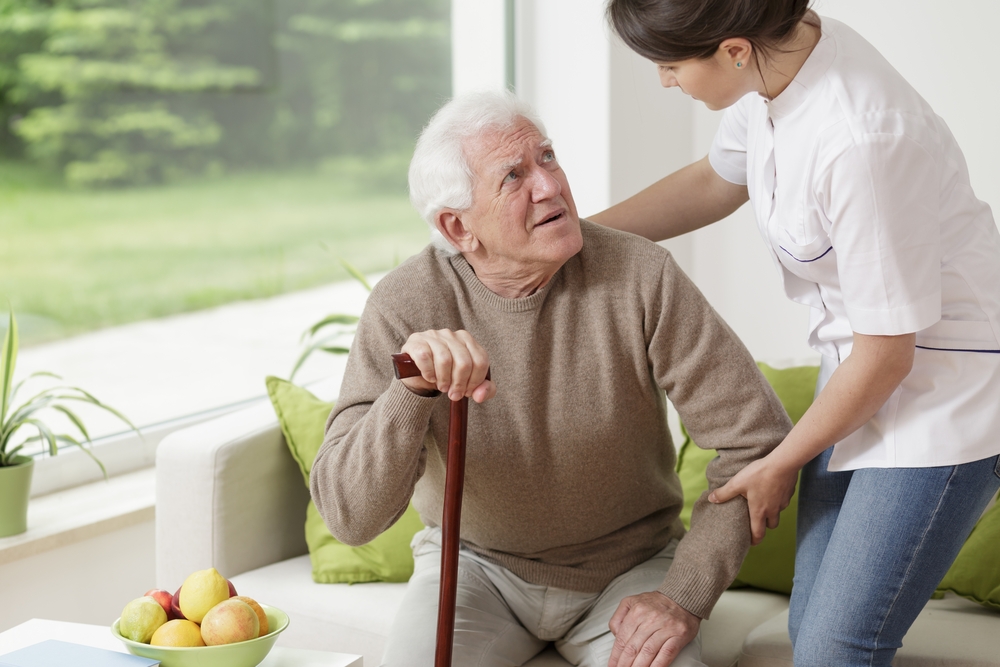It has been stated that “The adult human form is an awkward burden to lift or carry. Weighing up to 200 pounds or more, it has no handles, it is not rigid, and is susceptible to severe damage if mishandled or dropped. When lying in a bed, a patient is placed inconveniently for lifting, and the weight and placement of such a load would be tolerated by a few industrial workers”.[1]
Providing care in any nursing or residential facility is can be physically demanding work. Patients or residents often require assistance with transfers, personal care (including bathing & showering), mobilizing and other daily activities that can compromise the physical integrity of the carer.
Carers are often in situations that encourage poor posture (such as bending, stooping and reaching) with further negative reinforcement by the force required and repetition of the tasks. Indeed research in 1988 determined that back pain accounted for 25% of all workers compensation claims in the US with 22.4 million cases equating to 149.1 million lost workdays.[2]
In 2003 (revised 2009) the United States Department of Labor issued a guidance document titled ‘Guidelines for Nursing homes: Ergonomics for the prevention of musculoskeletal injuries’.[3] In this document the Occupational Health & Safety Administration recommended that to reduce risks all employers should:
- identify problems;
- implement solutions;
- addresses reports of injuries;
- provide training
They go on to suggest that ‘when problems related to ergonomics are identified, suitable options can then be selected and implemented to eliminate hazards. Effective solutions usually involve workplace modifications that eliminate hazards and improve the work environment…usually including the use of equipment…’
Interestingly the document provides some valuable decision-making algorithms and diagrammatic equipment options to resolve certain situations without mentioning the fallen resident or any solutions for handling in that circumstance.
It is reported that 33% of all musculoskeletal work-related injuries occur as a result of patient handling activities, with 83% of those injuries from in-patient healthcare workers. It is suggested that 40% percent of injuries due to lifting/transferring patients may have been prevented through the use of mechanical lift equipment.[1]
When considering equipment used to reduce or eliminate risk there is a challenge to understand, appreciate and reflect on market changes or technological advances. What was an appropriate piece of hoisting equipment 20 years ago may no longer be the most efficient or risk-reducing?
Theory and evidence also change on the basis of new research or experiential clinical reasoning which not only affect the choice of equipment but also processes and risk assessment. For example, our understanding of the ‘long lie’ and ‘delayed initial recovery’ research following a fall enables us to consider the equipment that safely supports positional change within ten minutes of the incident (fall). This alongside evidence regarding dignity and respect following a fall may determine us to consider that full-body passive hoisting from the floor may not be the most effective solution in terms of recovery.
An example of this developing evidence is the research conducted regarding the use of ceiling track hoisting systems:
‘A longitudinal study was conducted in three long-term care facilities to evaluate the effectiveness and cost-benefit of overhead lifts in reducing the risk of musculoskeletal injury among healthcare workers. Analysis of injury trends spanning 6 years before intervention (1996-2001) and 4 years after the intervention (2002-2005) found a significant and sustained decrease in workers’ compensation claims per number of beds and in working days lost per bed. The payback period was estimated under various assumptions and varied from 6.3 to 6.2 years if only direct claim-cost savings were included, and from 2.06 to 3.20 years when indirect savings were added’.[2]
Similar evidence can be found regarding supporting someone from the floor following a fall, where work in the United Kingdom has demonstrated a significant reduction in musculoskeletal injuries for paramedics called to help someone in a domestic setting.[3]
To proactively reduce musculoskeletal injuries as a result of patient/client handling a commitment must be made in some critical areas:
- Investment – Initial outlay on the right equipment is shown to be recouped quickly.
- Knowledge – Professionals and commissioners must be aware of up-to-date research to support evidence-based decision making.
- Market – There must be a commitment to know the equipment market so that informed decisions can be made.
- Process – Care facilities must have processes in place to assess, determine and reduce risks that are reviewed fluidly
Ensuring these steps are engrained in healthcare culture alongside an underlying commitment to high-quality patient and employee care will go a long way to reducing injuries and risks to both groups moving forward.
[1] Pompeii LA et al (2009) ‘Musculoskeletal injuries resulting from patient handling tasks among hospital workers’. Am J Ind Med. 2009 Jul;52(7):571-8. doi: 10.1002/ajim.20704.
[2] Statistics and Evaluation Department, Occupational Health and Safety Agency for Healthcare, Vancouver, Canada.
[3] https://mangarhealth.com/uk/case-studies/a-solution-to-manual-handling-in-the-workplace
[1] Anonymous. The nurse’s load (editorial). Lancet1965;ii:422–3 Available at: https://injuryprevention.bmj.com/content/10/4/206#ref-1 Accessed 02/10/19
[2] Guo HR, Tanaka S, Cameron LL, et al. Back pain among workers in the United States: national estimates and workers at high risk. Am J Ind Med 1995;28:591–602.
[3] https://www.osha.gov/ergonomics/guidelines/nursinghome/final_nh_guidelines.html Accessed 02/10/19




